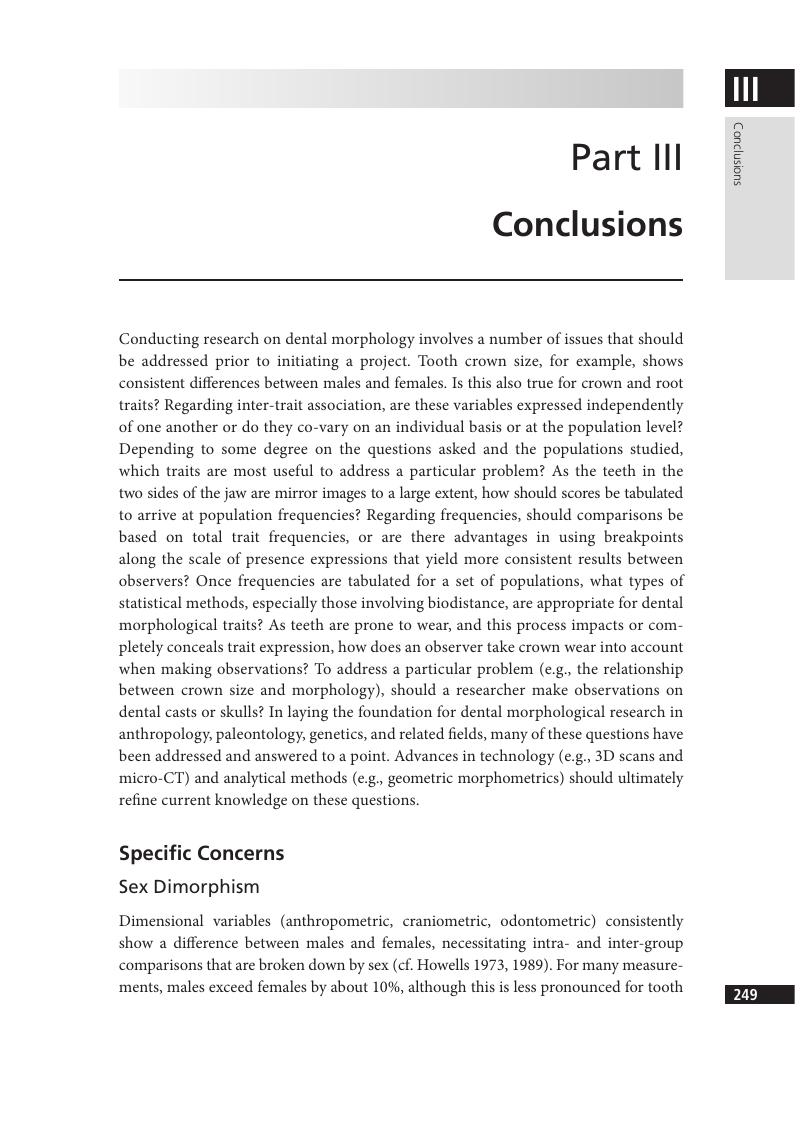Book contents
- Human Tooth Crown and Root MorphologyThe Arizona State University Dental Anthropology System
- Human Tooth Crown and Root Morphology
- Copyright page
- Dedication
- Contents
- Acknowledgments
- Part I Introduction
- Part II Crown and Root Trait Descriptions
- Part III Conclusions
- Appendix: Comparative Data
- Miscellaneous endmatter
- References
Part III - Conclusions
Published online by Cambridge University Press: 21 April 2017
- Human Tooth Crown and Root MorphologyThe Arizona State University Dental Anthropology System
- Human Tooth Crown and Root Morphology
- Copyright page
- Dedication
- Contents
- Acknowledgments
- Part I Introduction
- Part II Crown and Root Trait Descriptions
- Part III Conclusions
- Appendix: Comparative Data
- Miscellaneous endmatter
- References
Summary

- Type
- Chapter
- Information
- Human Tooth Crown and Root MorphologyThe Arizona State University Dental Anthropology System, pp. 249 - 264Publisher: Cambridge University PressPrint publication year: 2017



